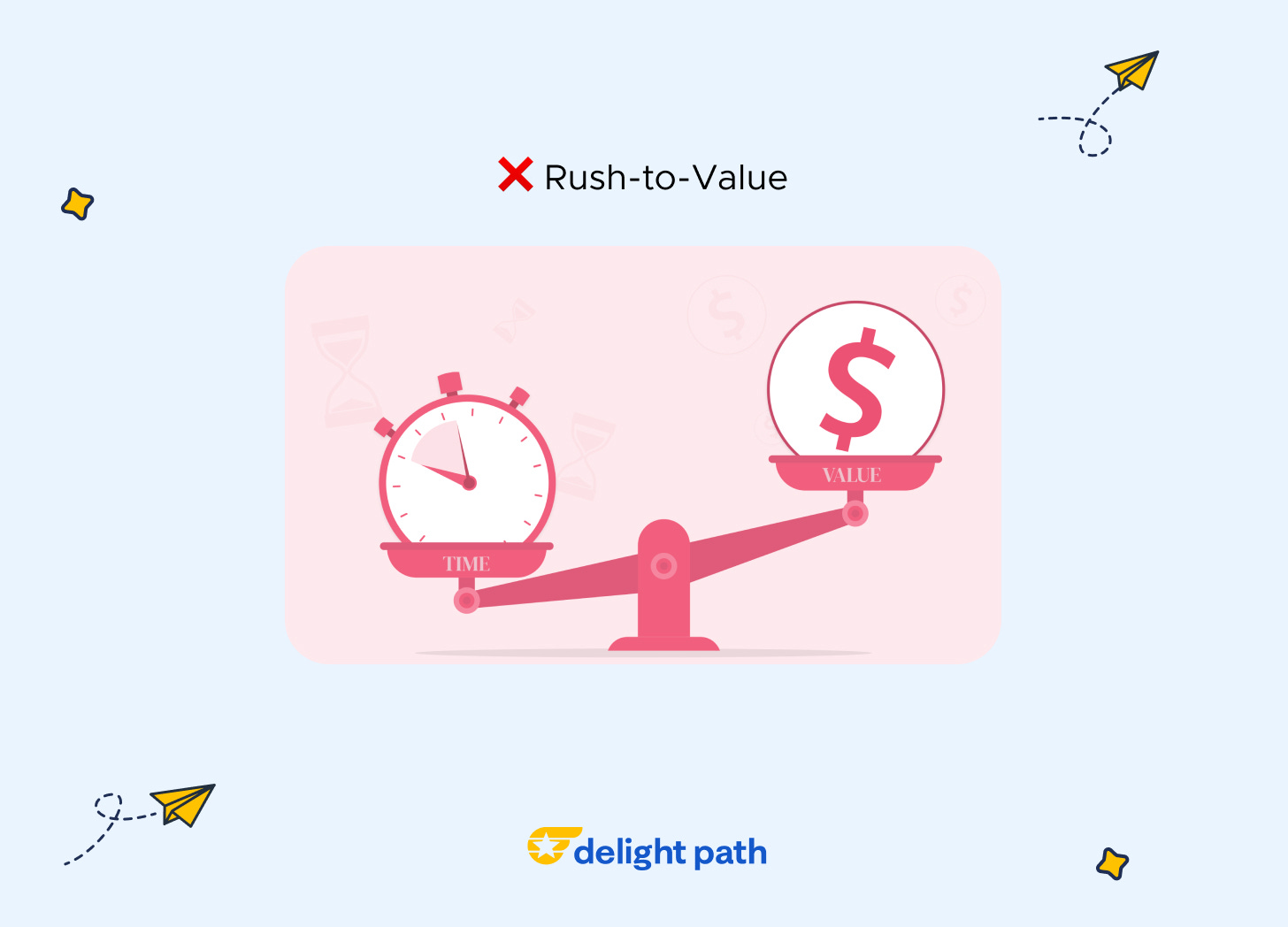The hidden cost of rushing to value
Sometimes slower onboarding is better. Rushing users to value might actually hurt retention.
This is a preview of my new book, EUREKA: The Customer Onboarding Playbook for High-Growth B2B Companies (coming June 2025).
You can also pre-order it now to get bonuses like:
Early access to selected chapters
Exclusive frameworks and templates
Private community access
Launch day bonuses
Plus, subscribe to Delight Path for weekly insights and behind-the-scenes looks at how the book is coming together.
Enjoy the preview!
"Reduce time-to-value at all costs!"
This mantra echoes through product and growth teams everywhere. The thinking goes: the faster users experience value, the more likely they are to stick around.
But what if rushing to value is actually hurting your retention?
The Hidden Cost of Speed
Claudiu Murariu from InnerTrends analyzed a product's time-to-value and found something surprising. While 64% of accounts completed onboarding in around nine hours, 36% took significantly longer. Conventional wisdom suggests that these slower users are at risk.
However, the data told a different story: The "slower" accounts showed 82% Week 1 retention compared to the average of 72%. Even more striking, by Week 12, these users retained 50% better than average (34% vs 22%).
This finding challenges conventional wisdom about time-to-value (TTV). Rushing to value is like cramming for a final exam. Sure, you might pass the test, but did you really learn anything? Are you set up for long-term success?
The Case for Slowing Down
Some friction in your onboarding isn't just acceptable—it's beneficial. Here's why:
1. True Mastery Takes Time
Complex B2B products often require deep understanding to deliver real value. Rushing or circumventing the learning process can lead to superficial usage and eventual abandonment.
2. Delayed Gratification Builds Value
The satisfaction of conquering a meaningful challenge creates deeper engagement than instant gratification. When users invest time in mastering your product, they're more likely to stick with it.
3. Meaningful Habits Form Slowly
Products designed for long-term engagement benefit from a measured approach that builds confidence gradually. Quick wins might feel good at the moment, but lasting habits require deeper understanding.
Finding Your Sweet Spot
The goal isn't to make your onboarding as fast as possible—it's to make it as effective as possible. Here's how to find the right balance:
Identify meaningful friction points that contribute to a better understanding
Remove unnecessary barriers that don't serve a clear purpose
Design intentional moments of learning and achievement
Test different pacing to find your optimal time-to-value
Remember: The race isn't always to the swift. Sometimes, the tortoise beats the hare.
That's all for now, folks!
I'd love to hear your unfiltered thoughts about this preview:
How do you balance speed and understanding in your onboarding?
What "beneficial friction" have you built into your user experience?
When have you seen rushing to value backfire?
Leave a comment below.




